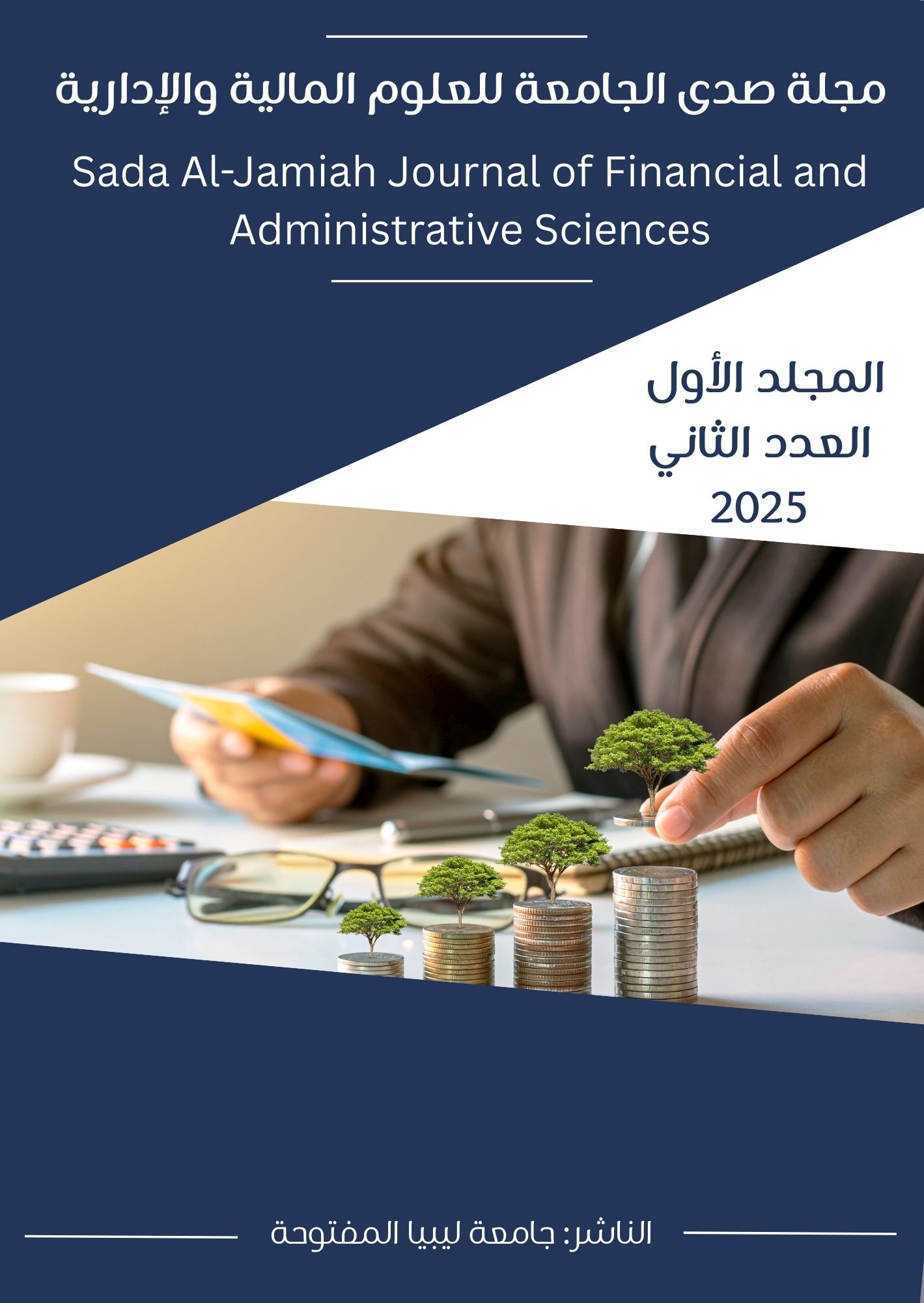Combating High Employee Turnover in Knowledge-Based Organizations: A Predictive HR Analytics Framework for Talent Retention and Strategic Workforce Planning
DOI:
https://doi.org/10.65422/sajfas.v1i2.67الكلمات المفتاحية:
employee turnover، knowledge-based organizations، predictive HR analytics، talent retention، workforce planning، machine learningالملخص
High employee turnover in knowledge-based organizations leads to loss of intellectual capital and increased costs. This paper presents a predictive human resources (HR) analytics framework for talent retention and strategic workforce planning in knowledge-driven firms. We use a publicly available HR dataset of 14,999 employees to identify patterns and risk factors for voluntary turnover. Key features such as job satisfaction, years at company, work-life balance, and compensation are analyzed using machine learning models (logistic regression, support vector machines, and random forests). Predictive models achieve up to ~88% accuracy in identifying employees at risk of leaving. Important predictors include low employee satisfaction, lack of recent promotion, long working hours, and mismatch in projects studio-pubs-static.s3.amazonaws.com. We propose an integrated framework where predictive insights trigger targeted retention interventions, such as career development or compensation adjustments, aligning HR strategy with business needs.
المراجع
1. Punnoose, R. & Ajit, P. (2016). Prediction of Employee Turnover in Organizations using Machine Learning Algorithms. International Journal of Advanced Research in Artificial Intelligence, 5(9), 22-26. DOI: 10.14569/IJARAI.2016.050904
2. Shaik, D. K., Rao, D. S. G. S., Babu, A. M., Reddy, D. D. V. L., & Ahmed, A. A. (2025). Predictive Modeling for HR Decision-Making: A Study of Employee Turnover. Journal of Marketing & Social Research, 2(4), 92-98. DOI: 10.61336/jmsr/25-04-13
3. Díaz, M., Hernández, J. J. G., & Salvador, J. L. G. (2023). Analyzing employee attrition using explainable AI for strategic HR decision-making. Mathematics, 11(22), 4677. DOI: 10.3390/math11224677
4. Pourkhodabakhsh, S., Mamoudan, M. M., & Bozorgi-Amiri, A. (2022). Effective machine learning, meta-heuristic algorithms and multi-criteria decision making to minimize human resource turnover. Applied Intelligence, 53(12), 16309–16331. DOI: 10.1007/s10489-022-04294-6
5. Jantan, H., Hamdan, A. R., & Othman, Z. A. (2011). Towards Applying Data Mining Techniques for Talent Management. Proceedings of 2011 International Conference on Computer Engineering and Applications (Vol. 2, pp. 63-67). IACSIT Press.
6. 41- Reham Ershaid Nusair. (2025). The Role of Green Human Resource Management in Advancing Sustainable Development in Health Sector Institutions. African Journal of Advanced Studies in Humanities and Social Sciences (AJASHSS), 4(2), 1–9.
7. Nagadevara, V., Srinivasan, V., & Valk, R. (2008). Establishing a link between employee turnover and withdrawal behaviours: Application of data mining techniques. Research and Practice in Human Resource Management, 16(2), 81-97.
8. Ozdemir, S. (2017). Predicting Employee Turnover with R: A Case Study Using HR Analytics Data. RStudio Pubs. https://rstudio-pubs-static.s3.amazonaws.com/345463_37f54d1c948b4cdfa181541841e0db8a.html
9. 29- Dr. Abdulfatah Mohamed Younis Sabie. (2024). Managing Multigenerational Teams in Project-Based Environments HR’s Role in Fostering Collaboration. African Journal of Advanced Studies in Humanities and Social Sciences (AJASHSS), 3(4), 52–64.
10. Group Project 2Yaka. (2020). Employee Attrition Analysis Using HR Analytics Dataset (HR_comma_sep.csv). MEF University Big Data Analytics (BDA503) GitHub Pages. https://mef-bda503.github.io/gpj-2yaka/Group_Project2Yaka.html
11. Stovel, M., & Bontis, N. (2002). Voluntary turnover: knowledge management – friend or foe? Journal of Intellectual Capital, 3(3), 303-322. DOI: 10.1108/14691930210435633
12. Bureau of Labor Statistics (2024). Job Openings and Labor Turnover – February 2024. U.S. Department of Labor. (Statistics on quit rates during the Great Resignation) peoplekeep.com
13. PeopleKeep (2024). Employee retention: The real cost of losing an employee. [Online Article]. Available: https://www.peoplekeep.com/blog/employee-retention-the-real-cost-of-losing-an-employee
14. OpenDataBay. (2024). Employee Turnover Prediction Dataset (HR Analytics – HR_comma_sep.csv). OpenDataBay. https://www.opendatabay.com/data/ai-ml/9a04a88d-7daf-496a-a449-6cfd1ee40dbd
15. 27- Dr. Moamer Touzer Mouftah. (2024). The impact of company size and growth on the relationship between operating cash flow and change in dividends. African Journal of Advanced Studies in Humanities and Social Sciences (AJASHSS), 3(3), 33–48.
16. MachineLearningGeek. (2023). Predicting Employee Churn in Python: A Machine Learning Tutorial. MachineLearningGeek. https://machinelearninggeek.com/predicting-employee-churn-in-python/#:~:text=employee%20in%20a%20month%3F%20,promotion%20in%20the%20last%205
17. Reham Ershaid Nusair (2025). Transforming Human Resource Management with Artificial Intelligence in Recruitment, Performance, and Retention. Libyan Open University Journal of Applied Sciences (LOUJAS), 1(1), 44-46.
18. 14- Ali Ibrahim Ali Daw. (2023). Role of In-service Training to Professional Competencies of Sports Science Lecturers in the Malaysian universities. African Journal of Advanced Studies in Humanities and Social Sciences (AJASHSS), 2(3), 399–404.
19. 25- Mohamed Ahmed Ahbil Al-Dlouly. (2024). The Influence of Administrative Policies on Employee Motivation and Productivity. African Journal of Advanced Studies in Humanities and Social Sciences (AJASHSS), 3(2), 156–165.
20. 48- Dr. Salem ALmabrouk Muse. (2025). Analyzing the Relationship Between Cash Flows and Earnings Per Share: An Empirical Study of Insurance Companies Listed on the Amman Stock Exchange (2016–2020). African Journal of Advanced Studies in Humanities and Social Sciences (AJASHSS), 4(3), 79–90.
21. 11- Reham Ershaid Nusair, & Taha Muftah Abuali. (2024). The Impact of Artificial Intelligence on Human Resource Practices and Employee Experience. Libyan Journal of Contemporary Academic Studies, 2(2), 13-21.








